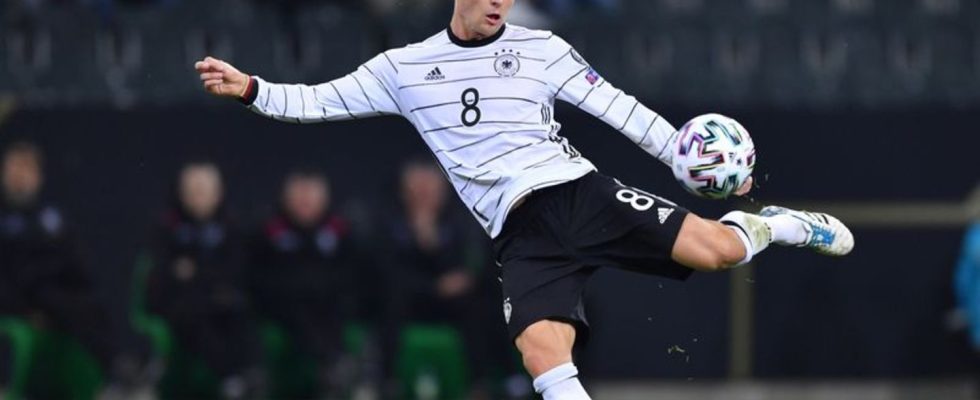National team
Perfect buffer stop: opportunities and risks of the Kroos comeback
Toni Kroos will play for the German national team again around three years after his retirement. photo
© Marius Becker/dpa
Toni Kroos issues his own EM ticket via Instagram. This shows the standing with which the Rio world champion returns to the national team. This is also a risk for the national coach.
Julian Nagelsmann’s “interesting thought” becomes reality. And that has consequences. With the comeback of Toni Kroos (34) will be given a spot in the national football team less than four months before the start of the European Championship. The national coach is apparently pursuing a special plan to stop the long period of disappointments. Whether this works is not just up to Kroos. A residual risk remains for the 2014 world champion and for Nagelsmann.
Why is Julian Nagelsmann bringing Toni Kroos back into the national team?
The national coach was dismayed and perhaps even shocked. The November defeats against Turkey (2:3) and in Austria (0:2) made it clear to Nagelsmann that he had overestimated his DFB team. The encouraging games overseas against the USA (3:1) and Mexico (2:2) on his debut a month earlier were patterns of no value.
One insight: The many highly gifted national players collapse collectively as a team at the slightest resistance, have no confidence in their actions and no winning ego. Title collector Kroos offers exactly these attributes like no other German footballer, even after an almost three-year international break.
What else can Kroos give the team?
Rest on the ball, of course. That’s guaranteed. And a healthy self-confidence as a Real Madrid star. But Nagelsmann also gets an ally for difficult moments off the pitch. On the one hand, Kroos can be a buffer for the team externally if the criticism becomes excessive, and internally he can act in many ways, as a provocateur and as a deceleration agent – the 106-time national player certainly has both skills.
With his experience and football intellect, he is also a seismograph. He was already one of those in the spring of 2018, when he sensed the impending World Cup debacle before many others. But he was no more able to prevent it himself than he was to prevent the next tournament disappointment at the European Championships in 2021 before his now revised resignation. Kroos’ time seemed to be over with the end of the era of national coach Joachim Löw.
How is the team’s playing system changing now?
Kroos will play. Not only at the March tests in France and against the Netherlands, but also at the home tournament. That is clear. Issuing your tournament ticket via Instagram is something that has never happened before in German tournament history.
So a place in the headquarters is occupied – and the big question is, who will play next to Kroos? Maybe Nagelsmann is relying on a real clearer on the six like Leverkusen’s Robert Andrich. Joshua Kimmich? Is moved very safely to the rear right. Ilkay Gundogan? Nagelsmann apparently sees the captain as being further ahead – that could then be at the expense of Jamal Musiala or Florian Wirtz. If both young stars were to play, there might be no room for Leroy Sané or Kai Havertz – a chain reaction would set in motion. Veterans Thomas Müller or Leon Goretzka could even be thrown out of the squad entirely as hardship cases.
Stability is important to Nagelsmann. It was not without reason that Antonio Rüdiger was the first to publicly promote the return of his Real colleague Kroos. As a central defender, he recently had to run behind far too often when there were gaps further up the field. Germany will play slower and more controlled with Kroos.
What impact does the comeback have on the team hierarchy?
The “Kimmich Generation”, the once promising and recently particularly critically viewed 1995/96 generation, has finally lost its claim to leadership. Nagelsmann relies on the 30+ principle. In addition to Kroos (34), Manuel Neuer (37) and Mats Hummels (35) are also reactivated fixed sizes. Gündogan (33) and Niclas Füllkrug (31) are already in the same decade of life as Nagelsmann (36) himself. That might not suit some ambitious mid-level players. Kroos has always been considered a loner who can also verbally pester people. He is not particularly suitable as a great figure of integration. Nagelsmann is taking this risk with him to the European Championships.

